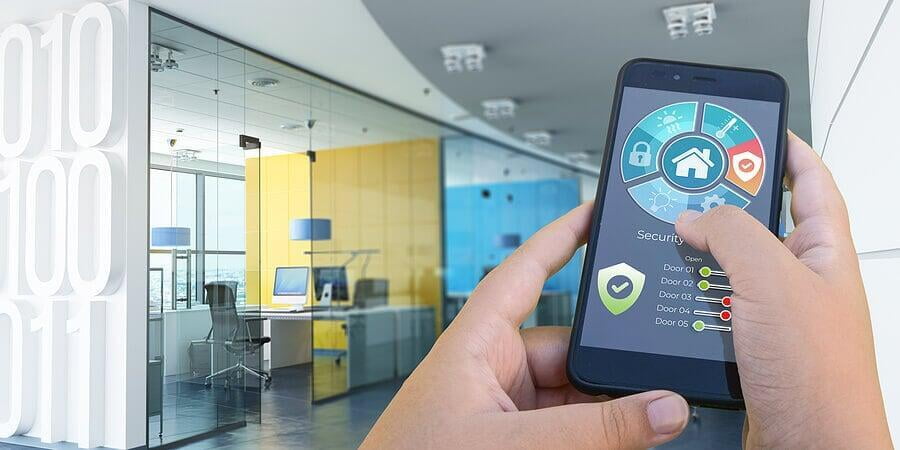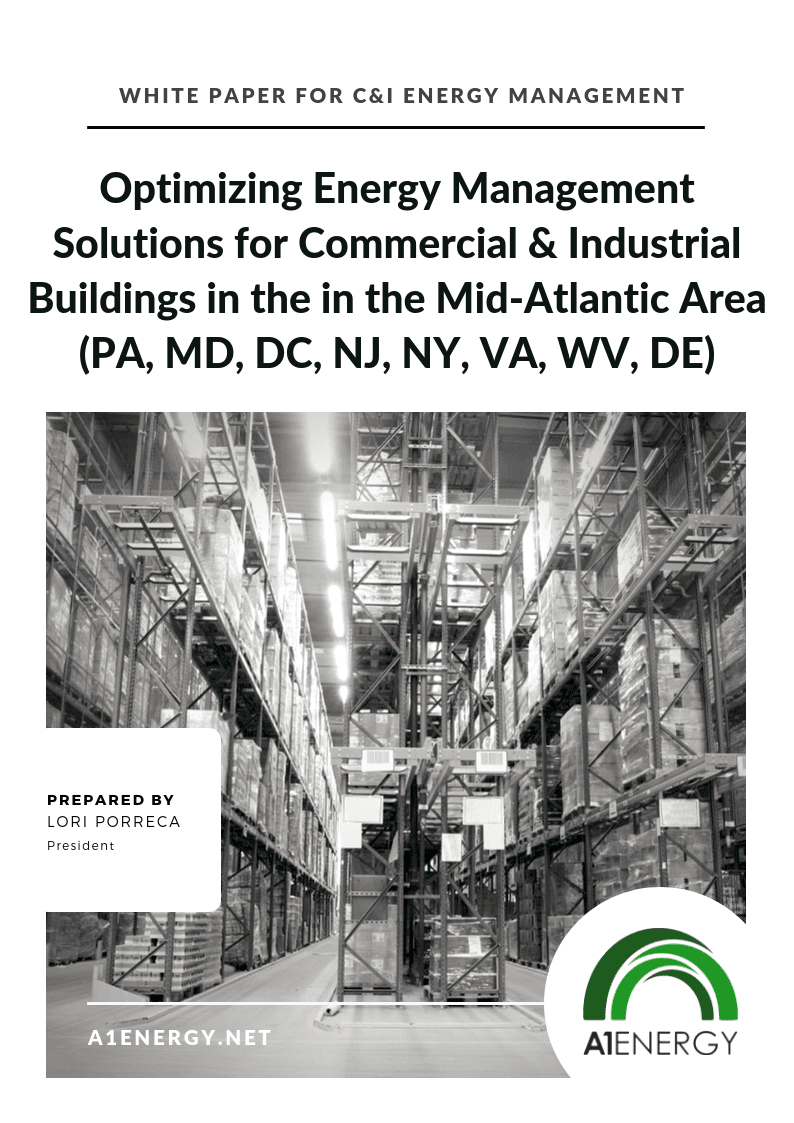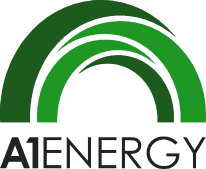
As a commercial or industrial business leader, it's only natural for you to be in control. This extends beyond your employees. Take charge of your spending and energy efficiency by instituting commercial lighting control systems in your building.
With lighting controls, you have options—and they're simpler than you think.
How Lighting Controls Can Save You Energy
Most buildings are using more energy from lighting than necessary, which means they're overspending on electricity. In general, people set lights higher than needed for a given space. Meanwhile, unoccupied spaces lack technology that can shut off lights as needed.
Lighting controls help you manage when, where, and how much you're using lights.
This helps you avoid being wasteful while retaining the necessary lighting you need for an efficient workflow or desirable consumer-facing space.
Some types of advanced lighting controls can save as much as 75% of energy compared to non-controlled lighting.
By installing energy saving lights with features like motion and occupancy sensors, photosensors, and daylight harvesting technology wherever you can, you'll be able to considerably lower energy demand on the homefront. Ultimately, you can take back control of your building, energy bill, and sustainability metrics.
Keep in mind that different types of lighting controls implement energy efficiency in unique ways.
Types of Lighting Controls You Should Know About
To maximize the benefits of lighting controls, you'll want to know the key types of controls that you can implement.
Aside from outdated basic lighting controls, there are two broad categories of lighting controls you can install:
- Advanced lighting controls: ALC systems are wireless control systems that serve functions like dimming, occupancy sensing, daylight harvesting, scheduling, and demand response. They're good at optimizing a space for use and getting rid of unnecessary energy. They offer some of the biggest opportunities for effective energy reduction.
- Networked lighting controls: NLC systems are a step above ALC systems because they use wirelessly networked integrated sensors. This enables the lighting fixtures that make up the building to communicate not only with the control system, but with one another. The systems use data to their advantage, helping you improve your energy usage over time.
Key Differences Between Advanced Lighting Control Systems vs. Networked Lighting Control Systems
Historically, the initial cost of advanced lighting control systems controls has been higher, leading business owners to veer away from this option. But they have decreased over the years (by as much as 20% cheaper from 2019–2020), which makes them a viable option for companies of different sizes. This is useful whether you're upgrading your lighting systems or setting up controls for new construction.
Meanwhile, networked controls are getting increasingly intelligent. Smart lighting is able to profile energy consumption for a variety of frameworks, and its list of applications is only growing. While the initial cost may be higher, they manage load to minimize cost and increase revenue over time. If you're renting out a warehouse facility, NLCs also reduce the cost of changeover to new building lessees.
Here are a few examples of networked lighting controls:
- Acuity Controls nLight AIR offers autonomous bridging technology. This means it optimizes your existing lighting control devices by connecting them to a hub, or system controller.
- SimplySnap by Synapse supports retrofit and new construction installations for a variety of lighting applications.
- Cree SmartCast Technology delivers lighting control solutions with a brand-specific one-button setup and motion sensing technology.
How to Simplify Lighting Controls in Commercial Buildings
Frankly, the best way to keep your lighting controls solutions simple is to choose a holistic system that can grow with you. In the case of networked lighting solutions, you're optimizing your facility right now and for the future of energy usage by gathering data on the fly.
Because networked lighting is smart and centralized (and conducts two-way communication), you're setting yourself up for success. And while the systems may feel complex in nature, that's because they are—but they're doing the hard work so you don't have to.
An NLC system is at the core of the 175,000-square-foot Toronto General Hospital's upgrade from basic, a process that cut the building's energy consumption by about 74%. Carnegie Mellon University also used a basic-to-networked upgrade to save about 70% of energy costs without sacrificing performance.
It goes to show how monumental a networked lighting control upgrade can be when done right. It doesn't have to make facility managers pull their hair out during the process, either.

ENERGY OPTIMIZATION WHITE PAPER
Check out this white paper to get energy optimization insights for your commercial or industrial facility.
What to Know About Lighting Controls for LEED Certification
LEED certification provides a framework for energy efficiency. To be LEED-compliant, commercial and industrial facilities must take lighting controls into account.
Lighting controls requirements for LEED certification include:
- Daylight responsive controls for areas within 15 feet of windows and skylights that are lit during the daytime. Identify your daylit spaces and install automatic switches or dimming features that respond to existing natural light levels.
- Daylight responsive controls for at least 50% of the building's lighting load.
- Occupancy sensors for at least 75% of the building's connected lighting load.
Lighting Controls for Demand Response Revenue
Utility companies have ways of trimming peak demand to help maintain grid integrity and keep their costs down. One of those ways is through demand response programs.
There are two types of demand response programs: Economic and emergency.
Lighting is a key factor in energy usage, accounting for an average of 20% of electricity used on site. This makes it a great target for demand response.
Installing lighting controls contributes to passive lighting demand response. Occupancy sensors, daylight harvesting, and other types of lighting controls can minimize usage during times of peak demand. For businesses involved in revenue-generating demand response programs, reducing non-essential lighting is an easy way to earn money back on your energy and minimize the overall cost of lighting.
If you have never participated in a demand response program in your state before, it's a good idea to line it up with a lighting control installation. In Pennsylvania, commercial and industrial organizations make up a huge chunk of demand response participants, helping generate revenue for their respective businesses and minimize grid pressure during peak times.
What's the Best Lighting Control System for Your Commercial or Industrial Business?
Even though they're invisible to the average person who isn't involved in the process, choosing to install lighting controls is one of the most important decisions you'll make as a commercial or industrial facility owner.
The right choice for your business is one that works with the nuances of your building or complex. It's one that caters to your business operations and makes life simple for you, not only now but years down the line.
Our advice? Work with a local energy consultant to determine the specific lighting control system that checks off all your boxes. There are plenty of options, especially when it comes to innovative networked lighting controls.
If you're running a facility in or around Pennsylvania, reach out to A1 Energy for a lighting control consultation. We have the scoop on energy-saving lighting controls that can:
- Shave your energy usage
- Make you LEED-compliant
- Help you generate revenue from regional demand response programs
- Gather data for an increasingly optimized lighting experience across your facility
